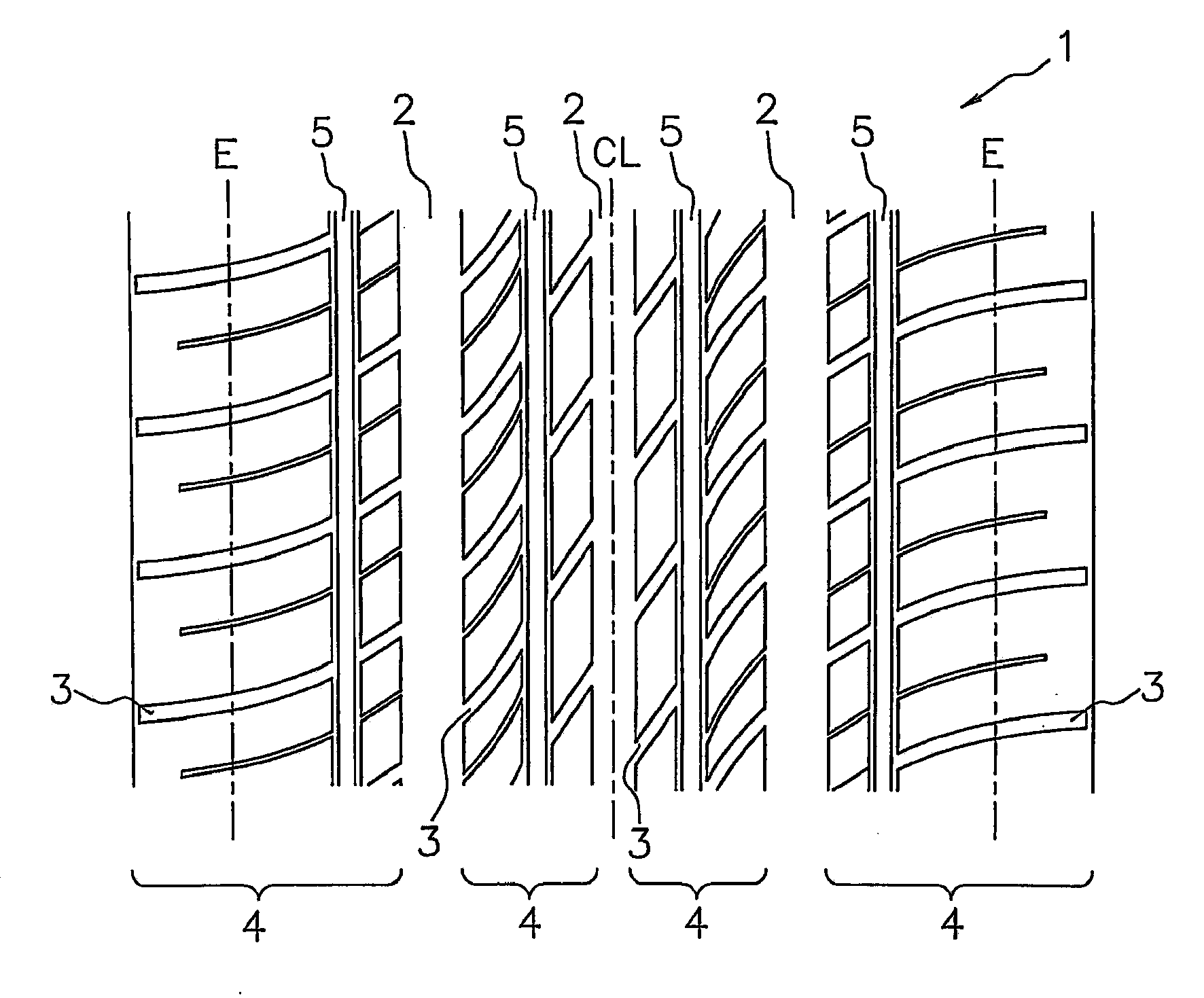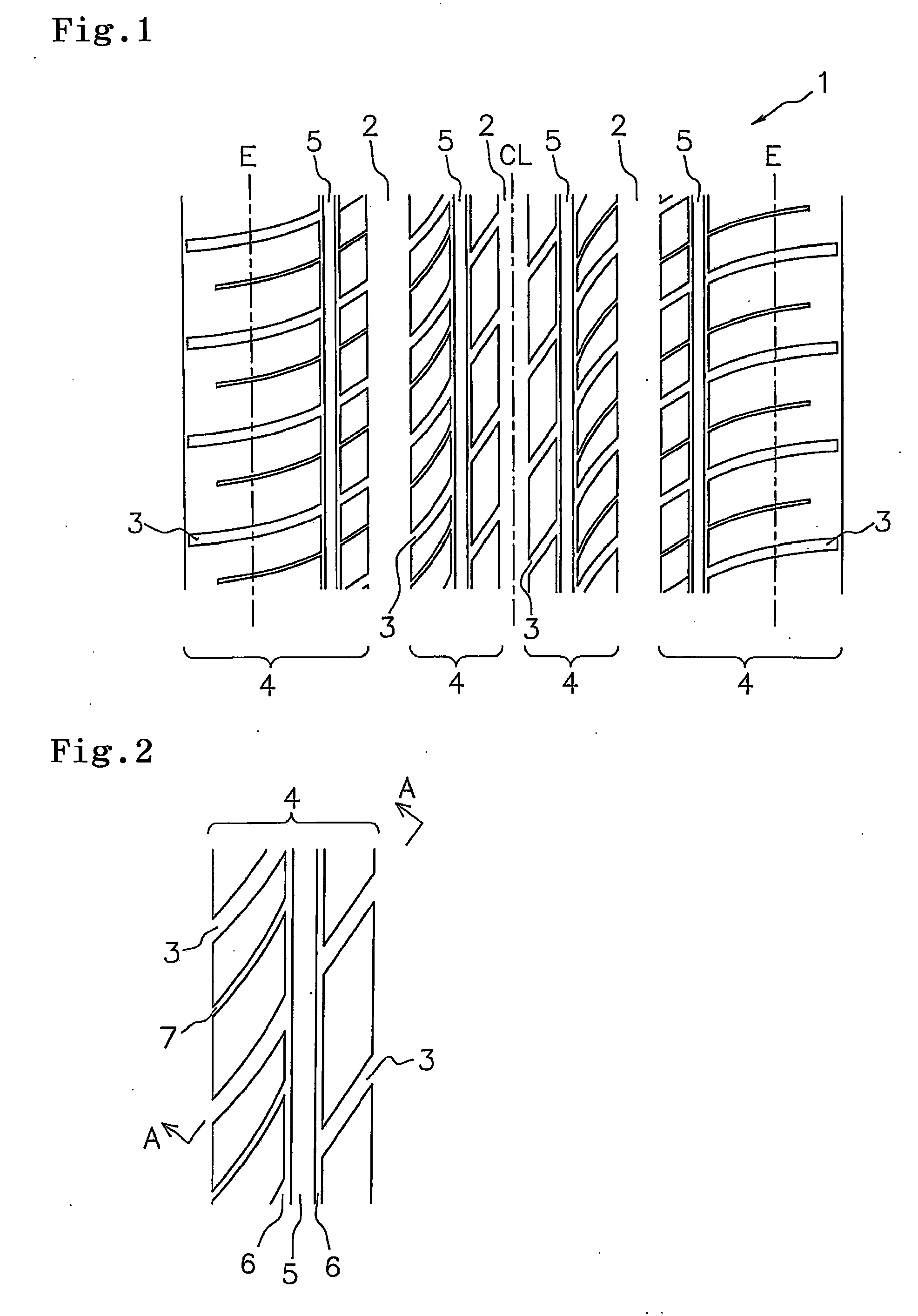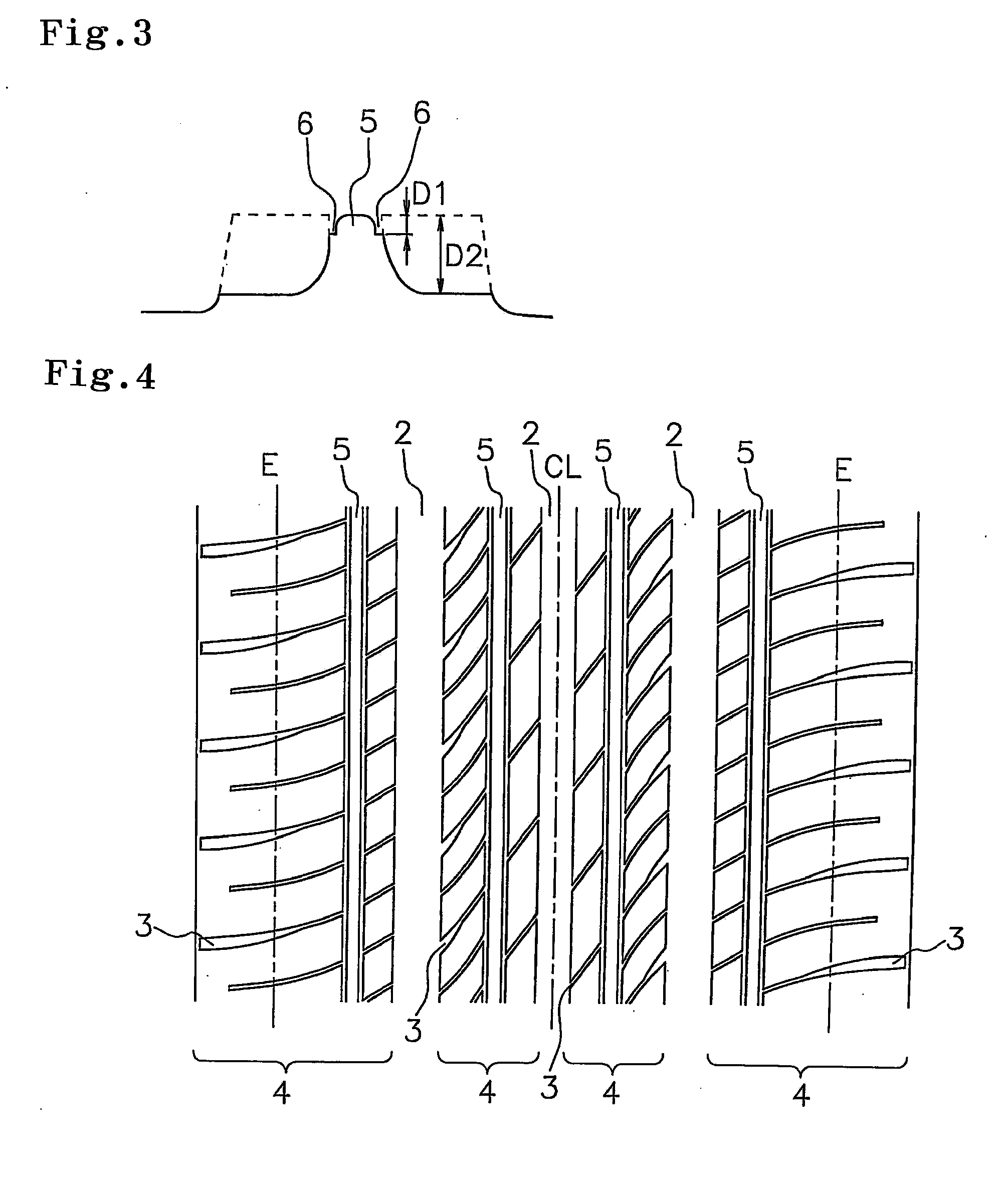Pneumatic Tire
a pneumatic tire and tire body technology, applied in the field of pneumatic tires, can solve the problems of pneumatic tires disclosed in documents, irregular wear, and increased rolling resistance, and achieve the effects of reducing deformation of blocks and hysteresis loss, increasing rolling resistance, and reducing rolling resistan
- Summary
- Abstract
- Description
- Claims
- Application Information
AI Technical Summary
Benefits of technology
Problems solved by technology
Method used
Image
Examples
example 1
[0035]The following pneumatic tire was prepared. That is, in the tread portion 1 as shown in FIG. 1, the width of the thin rib 5: 4 mm; curvature radius of chamfered edges of the thin rib 5: 1.5 mm; location of thin rib 5: center line of block array 4 was located in a 50% area of width of the block array 4 with respect to the end at tire equator line CL side as viewed in a width direction of the tire; the depth of the sipes 6 extending in the circumferential direction of the tire: 2 mm; the width the sipes: 1 mm; depth of the lateral groove 3: 7 mm; and width of the lateral groove 3: 3 mm. Using this tire, the above-described performance tests were carried out. The results are shown in Table 1.
PUM
 Login to View More
Login to View More Abstract
Description
Claims
Application Information
 Login to View More
Login to View More - R&D
- Intellectual Property
- Life Sciences
- Materials
- Tech Scout
- Unparalleled Data Quality
- Higher Quality Content
- 60% Fewer Hallucinations
Browse by: Latest US Patents, China's latest patents, Technical Efficacy Thesaurus, Application Domain, Technology Topic, Popular Technical Reports.
© 2025 PatSnap. All rights reserved.Legal|Privacy policy|Modern Slavery Act Transparency Statement|Sitemap|About US| Contact US: help@patsnap.com



